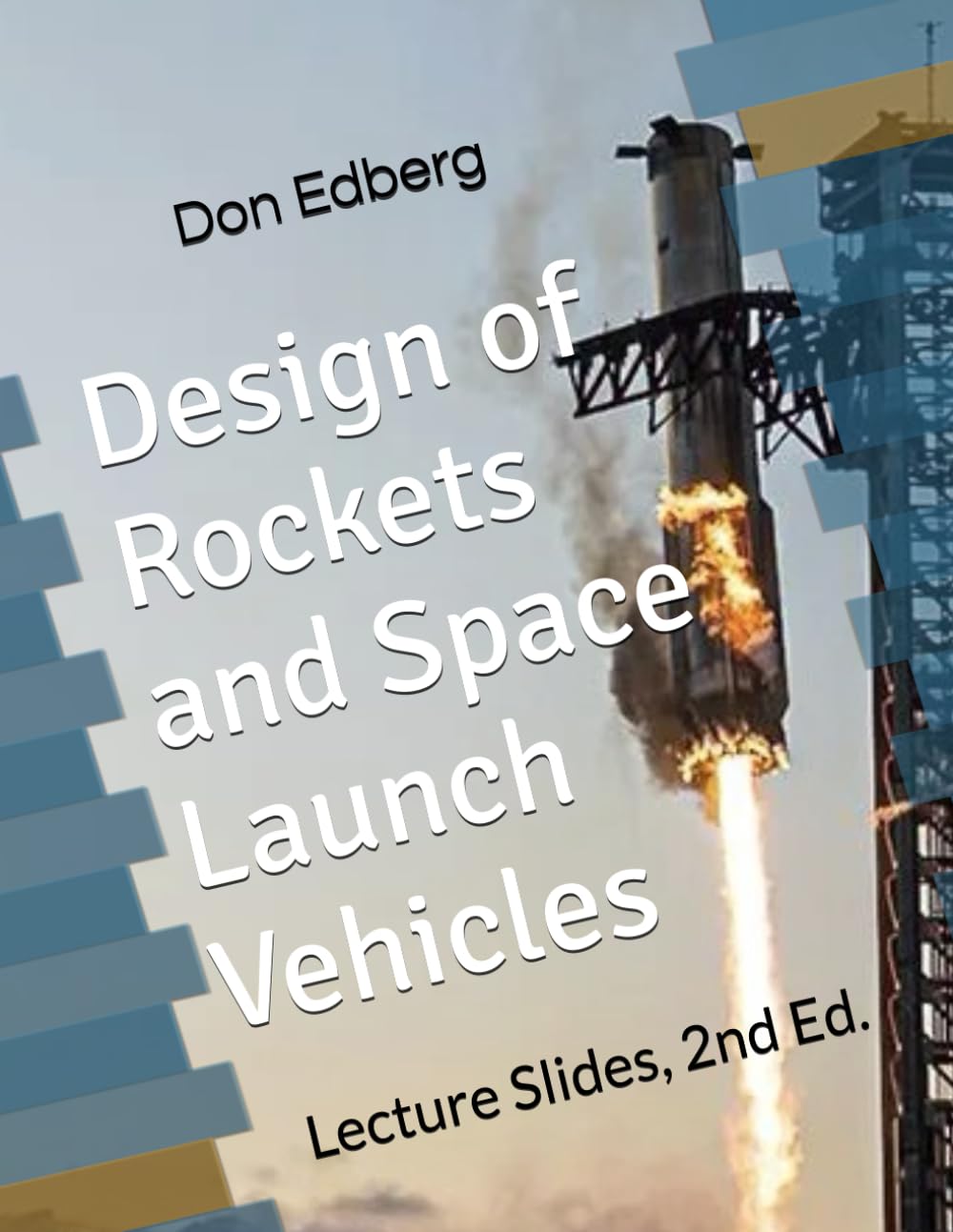This book is a 390-page collection of over 1,900 color technical slides presented in a course on the design, development, and operation of rockets and space launch vehicles (LVs). The course is offered by the American Institute of Aeronautics and Astronautics (AIAA), UCLA, and Taksha Institute as well as given by its author, Don Edberg, as a consultant and has been given to over 300 registrants at organizations such as NTSB and U.K.’s Civil Aeronautic Authority. The materials are also taught in “Space Launch Vehicle Design” courses given by the author at California State Polytechnic University, Pomona and USC to over 370 college seniors and grad students since 2015. The information in these slides have been gathered from the author’s experience as well as open sources such as engineering textbooks, technical papers, manufacturer websites, and other sources to tell a complete and unified story on how LVs are designed, built, and operated. The materials are all in the public domain but are rarely available together in a cohesive collection such as this, also contained in a 1,100-page textbook: Design of Rockets and Space Launch Vehicles 2nd Edition, ISBN 9781624106415. This book contains color images of the course lecture slides that cover the entire design process beginning with mission requirements and initial concepts through the end-of-flight disposal or re-use. There are presentations for 17 oral lectures on all aspects of design and operation of LVs, each providing a combination of theoretical concepts along with practical, easy-to-understand diagrams and photos of illustrative hardware and concepts (each lecture corresponds to a chapter of the textbook). A multitude of practical step-by-step numerical examples is used to demonstrate important ideas and practices. Book Contents After an introduction, we look at launch vehicle (LV) projects, launch sites, & the space economy. Next, we look at the vast history of LVs from the dawn of spaceflight in 1957 until the present and consider current and future planned projects. Then, before the actual design process begins, we provide information on important aspects of orbits and LV required performance, rocket engines, solid and liquid propulsion, performance & different types of staging, trajectory analysis, equations of motion and simulations (including launch profiles of 12 actual LVs), structures, tankage, payload accommodation, and layout. New materials have been added to discuss recovery and reuse of LVs. Next, we provide a series of lectures on the design process itself, beginning with the mission requirements and design constraints. Then we discuss how initial sizing of a LV is carried out using required performance to size tanks and support structure, followed by initial layout including an example for a two-stage to orbit LV. We show how to estimate LV mass properties. Next, we look at flight in an atmosphere and discuss gravity and drag losses associated with boost to orbit. Using simple graphical methods, we calculate aerodynamic loads which lead to the LV’s shear, bending, and axial loads which allow the calculation of internal stresses with internal pressurization at max-q conditions, and also are used determine the LV’s stability and control characteristics and required thrust vector controls (TVC). After passing through the design process, we provide information on vibration, shock, acoustics, and thermal loading, along with LVs’ onboard systems & launch pad facilities, and manufacturing. We look at the many types of testing that the launch vehicle must pass, followed by a discussion of 20 actual failures, lessons learned, and ways to improve reliability. The final topic is cost estimation and includes project life cycles, cost modeling methods, direct & indirect costs, hardware costs, and benefits of re-use. This is the most comprehensive collection of design information available.
Design of Rockets & Space Launch Vehicles: Lecture Slides, 2nd Ed.
$60.00
This book provides advanced educational content on aerospace engineering design, development, and operation.







Reviews
There are no reviews yet.